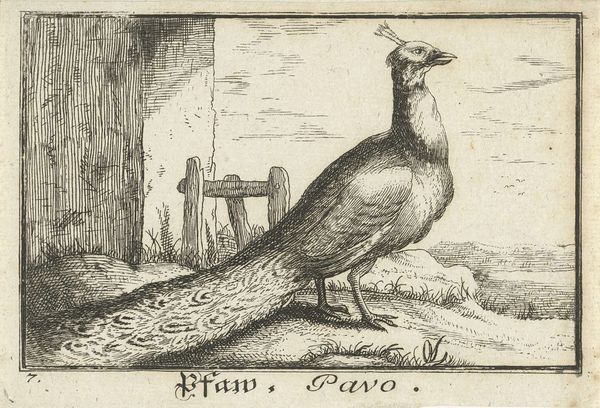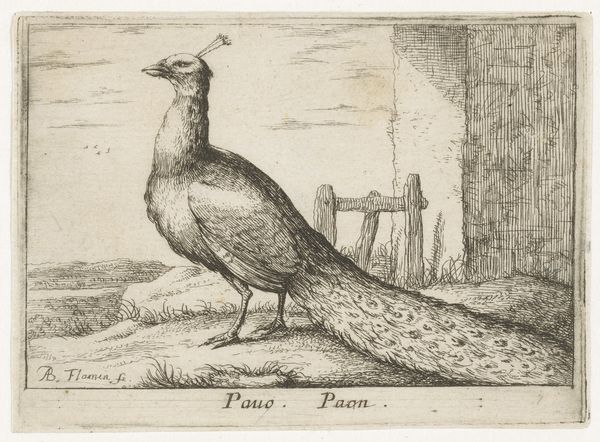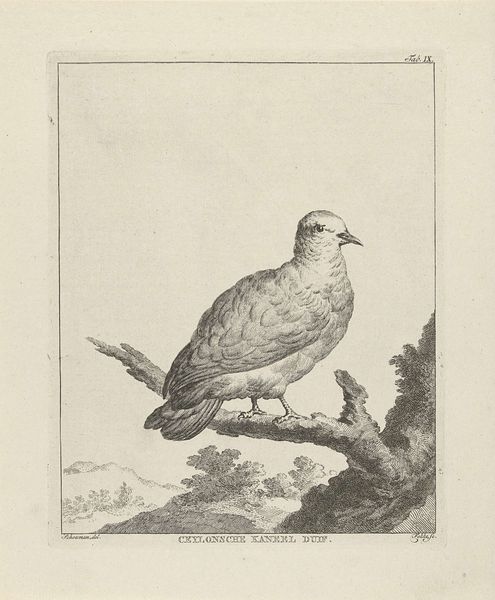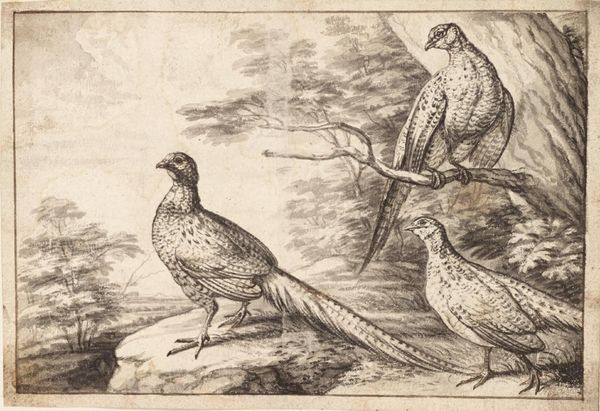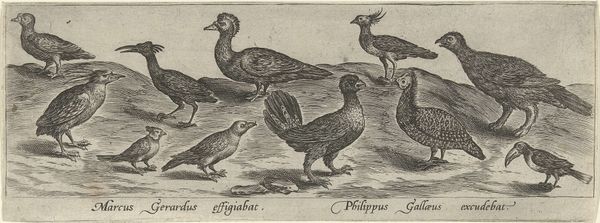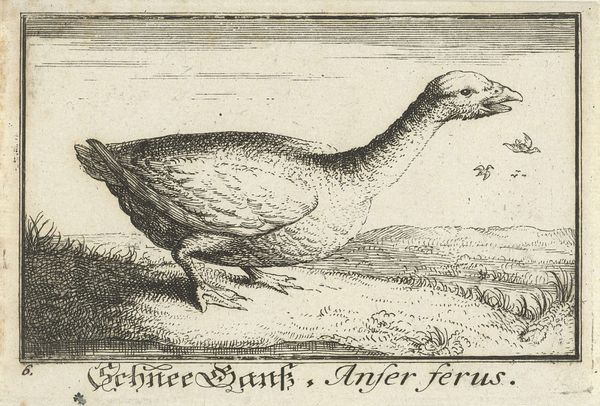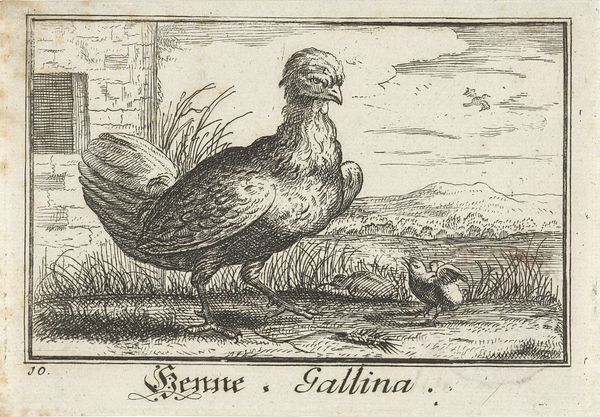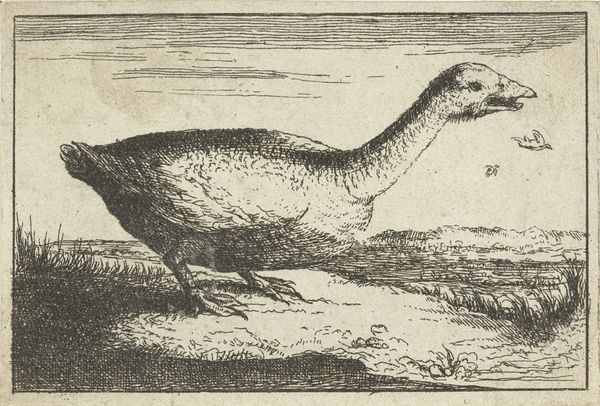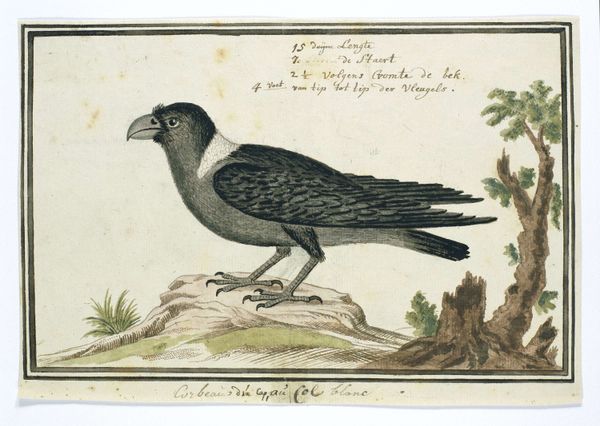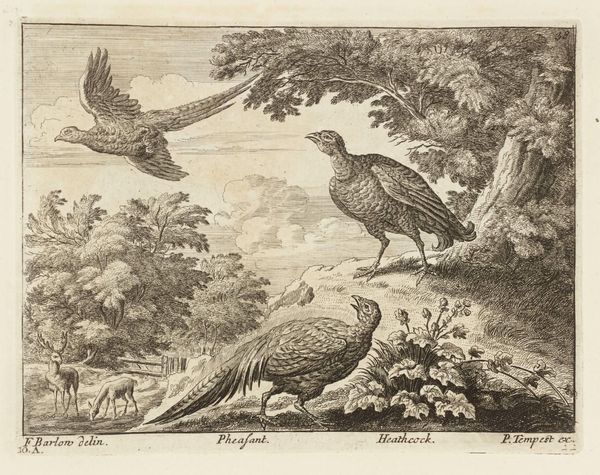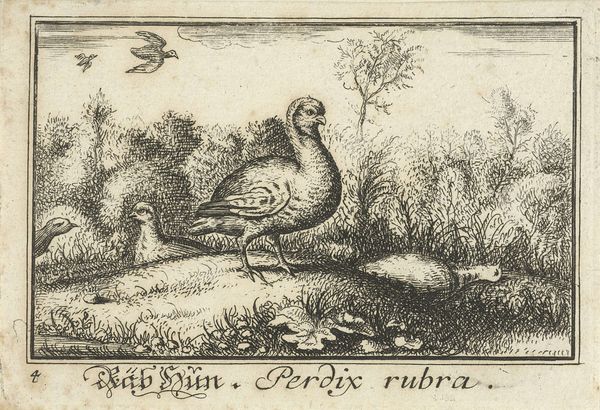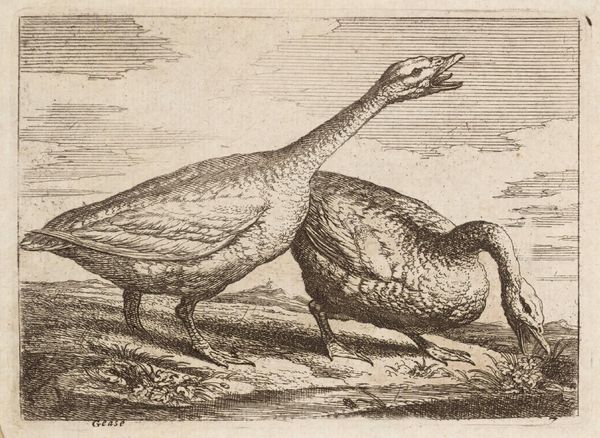
print, etching, engraving
#
dutch-golden-age
# print
#
pen sketch
#
etching
#
pencil sketch
#
old engraving style
#
landscape
#
figuration
#
pen-ink sketch
#
line
#
pen work
#
genre-painting
#
naturalism
#
engraving
#
realism
Dimensions: height 69 mm, width 99 mm
Copyright: Rijks Museum: Open Domain
Albert Flamen created this print of a pheasant in the 17th century using etching. This intaglio process involves drawing with a sharp needle on a wax-coated metal plate, which is then submerged in acid. The acid bites away the exposed lines, creating grooves that hold ink. The plate is wiped clean, leaving ink only in the etched lines. When pressed against paper, the image transfers, resulting in a print with a slightly raised texture. The quality of the final image depends on the amount of time and skill invested at each stage, from the preparation of the plate to the actual printing process. The thin, wiry lines that define the pheasant and its surroundings speak to the precision and control of the etching process. Prints like these played a crucial role in disseminating images and knowledge. This one also reflects the growing interest in natural history during the period. By focusing on the materials and techniques involved, we gain a deeper appreciation for the artistic skill and cultural context of this seemingly simple image.
Comments
No comments
Be the first to comment and join the conversation on the ultimate creative platform.

